While some men may not necessarily need to rotate how their closet space is used as the seasons change, doing so will not only give you the peace of mind that comes with having an uncrowded closet but it might also be beneficial for the wearable life of your garments in the long run.
Before we begin with the techniques of proper storage, here are a few things you may want to consider:
Time To Get Rid Of Unused Or Damaged Garments
First, as long as you’re already going through your closet, now would be a good time to get rid of garments that you really aren’t wearing anymore. Heavily worn or damaged items should be discarded, items needing minor repairs should be fixed up, and things that are in good shape but you don’t really see yourself wearing anymore should be donated. As a very general rule of thumb, if you find that an item has stayed on its hanger for more than a year unworn, it’s probably a good sign that you can get rid of it. Some people are more strict with this and say that you should part with things if you haven’t worn them in two months but you can decide what timetable is right for you.
Clean Up!
Additionally, this may be a good time to clean the closet itself as well. Vacuum the floor, wipe down the shelves, and so on. Speaking of cleaning before they’re stored, all of your winter wardrobe items should be thoroughly cleaned. After all, you don’t want dirt, dust, and other debris settling into your garments while they’re in storage for multiple months. Additionally, insects like moths and silverfish are naturally attracted to lingering scents on clothing, even scents that are imperceptible to humans.
To begin our specific cleaning instructions then, footwear should first be wiped down with a damp cloth then a clean dry cloth and then finally, given a good pass with a shoe brush. Polishing with saddle soap or leather conditioner could also be a good idea at this time and for suede, you’ll want to use cleaning tools that are specifically designed for that material. Make sure to wipe down the interiors of your footwear if you’re able as well. Also, giving footwear a day to sit and deodorize with something like a sachet full of baking soda for at least a day before storing can also be beneficial and while we, here at the Gentleman’s Gazette, advocate for keeping your footwear in tip-top shape on a day to day basis with high-quality shoe trees, natural cedar models may actually wick out too much of footwear’s natural oils if they’re left in for months at a time. With that said, the best way to keep your footwear in shape while storing it for months is to fill it with acid-free tissue paper scrunched up tightly.
Hats should also be wiped down and brushed but with a softer garment brush, a shoe brush would be too abrasive for that kind of material.
Most other items should be laundered as normal which means either hand washing or machine washing in mesh garment bags and then left to dry on a drying rack.
You can prevent insect damage to your clothes by using a natural repellent like lavender. Although something like mothballs may seem like the easy solution, they’re actually bad for storage with your garments over time. Not only do mothballs carry an unpleasant odor but the compounds that are used to make them aren’t exactly healthy after all. Think of it this way, if moths naturally know to keep away from them then humans probably should too. Cedar repels moths well but as we mentioned before, leaving clothing in direct contact with cedar for months at a time can dry it out or wick out some of the natural oils. Also, if you want to use something like a cedar chest, the gaps in the construction of those types of containers will sometimes still let insects in.
Best Ways To Store Your Garments
You can start by placing heavier items like denim, other trousers, and coats at the bottom of a breathable cotton storage container. You can find both soft-bodied models and ones with reinforcement at the sides, whichever you would prefer.
Medium weight items like sweaters come next in the storage container and then lightweight items like shirts can be placed on top. Delicate items like sweaters, ties, or scarves made from materials like cashmere, can also be wrapped in acid-free tissue paper for an extra layer of protection.
Also, you can place your cashmere items in a plastic bag and put them in the freezer for a day or two before storing them just to make sure that the extreme cold kills any moths or larvae that might be present.
Why not just use plastic storage containers for the long term then? Simply stated, when any garment is left in a plastic bin or garment bag and exposed to light, yellowing of the garment can occur. Further, the lack of air circulation inside most plastic containers can lead to moisture accumulation or even mold if the containers are stored improperly.
It’s important that items not to be worn for a long period of time be neatly folded instead of left on the hanger, this is especially true for sweaters. Left to hang, garments made from wool, cashmere, acrylic, or polyester will become misshapen over time as gravity pulls them in different directions across the hanger. Cotton garments are more resilient than these other types but still, folding is always preferable to hanging for long-term storage.
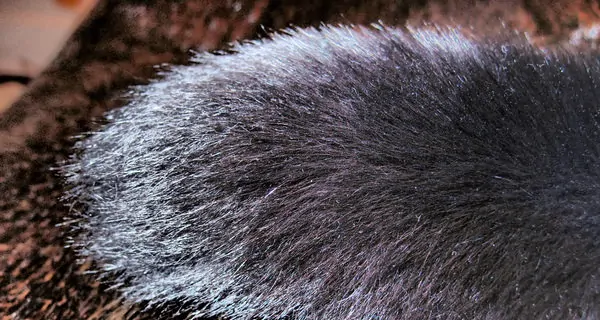
If you do have a genuine fur coat, you can consider keeping it hung up but at the same time, you might want to consider getting it professionally stored. Real fur needs to be kept in climate-controlled spaces at temperatures of around 50 degrees Fahrenheit or 10 degrees Celsius and roughly 50% humidity to be kept in good condition over the long term. If you are leaving anything hung up, opt for a shaped or padded hanger over a standard plastic hanger and it goes without saying, no wire hangers ever. Before storing coats, remember also to remove any items from the pockets, meaning both the interior and exterior pockets.
Lighter weight trousers, as well as sweaters and shirts, can also be rolled instead of folded. This way, you can stack them horizontally instead of vertically which may mean more maximization of space in your storage containers.
You can store footwear on the floor or a shelf of your closet in the open air but to be even more safe, putting it back into its original box or another cotton storage container would be a better idea. Additionally, things like hanging boot racks are also available.
Your cotton containers and any other loose garments that you may have should be stored in an environment that is dark, dry, clean, and cool. What we mean by cool here is about sixty-five degrees Fahrenheit or eighteen degrees Celsius. Bright environments will cause your clothing to fade. Hot or damp environments are just going to lead to mildew and of course, a dusty environment will just get your recently cleaned clothes dirty again.

Don’t try to be overly efficient with your storage containers and overfill them either. Remember that space and breathability are key to making sure that your garments have proper air circulation so that you don’t get moisture buildup or excess wrinkling. If you need to buy a few more cotton storage containers to make sure that everything is stored properly, it’s an investment that will give you a great return in the long run.
If you do need to be especially mindful of maximizing your storage space, keep in mind that some garments can be stored inside of others. For example, you could take gloves and nest them inside of boots. Vacuum sealable storage bags can also come in handy but keep in mind that the wrinkles created from this process will be much harder to get out when you excavate your garments again in the fall and when it does come time to get your garments out of storage again, steaming them with a garment steamer should be able to get out any wrinkling or scents that have accumulated in the passing months.
Here’s one final tip for today, do remember to keep a couple of transitional pieces out of storage unless you’ve happened to wait until the middle of summer to put away all of your winter clothing. Having a few medium-weight pieces out of storage that you can wear for colder spring days is a good idea especially if you live in a part of the globe where spring can mean warmer days and cooler nights. For example, here in Minnesota where Gentleman’s Gazette headquarters is located, having a few of these transitional pieces will be smart over time.
With these tips at your disposal then, you should head into spring with a closet that’s neat and tidy and garments that are safely and tightly packed away until things get chilly again.

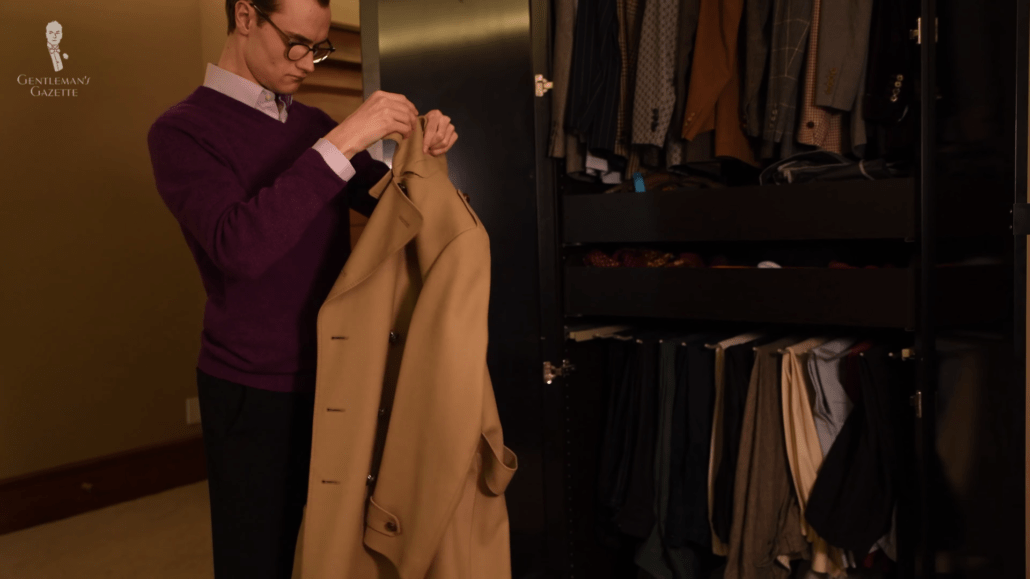
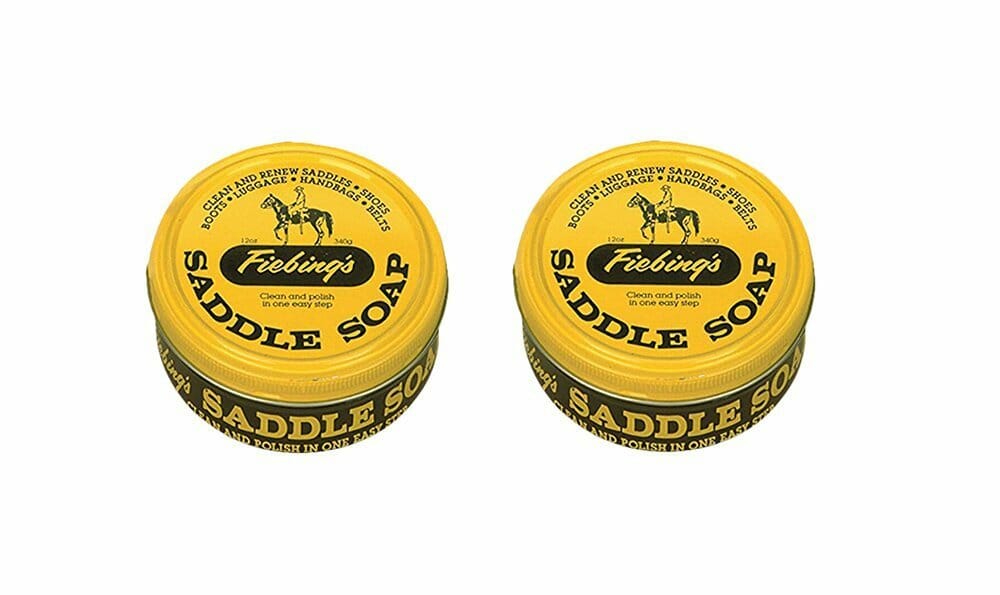
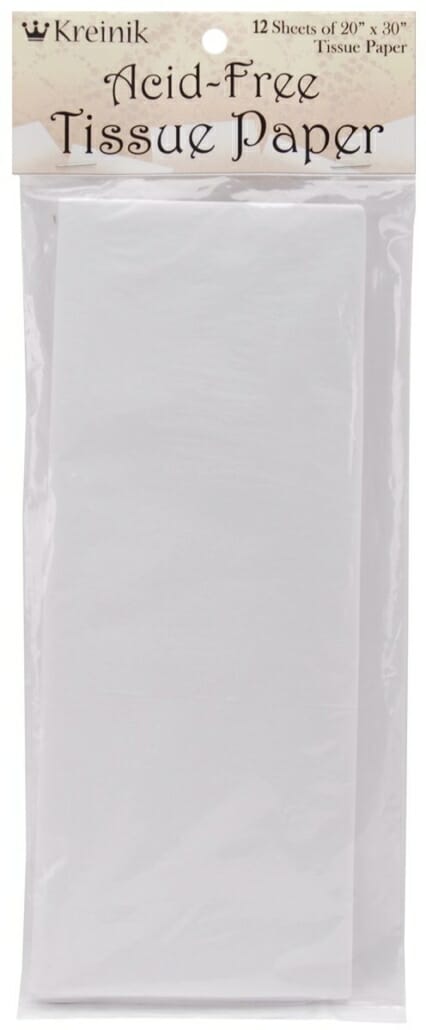

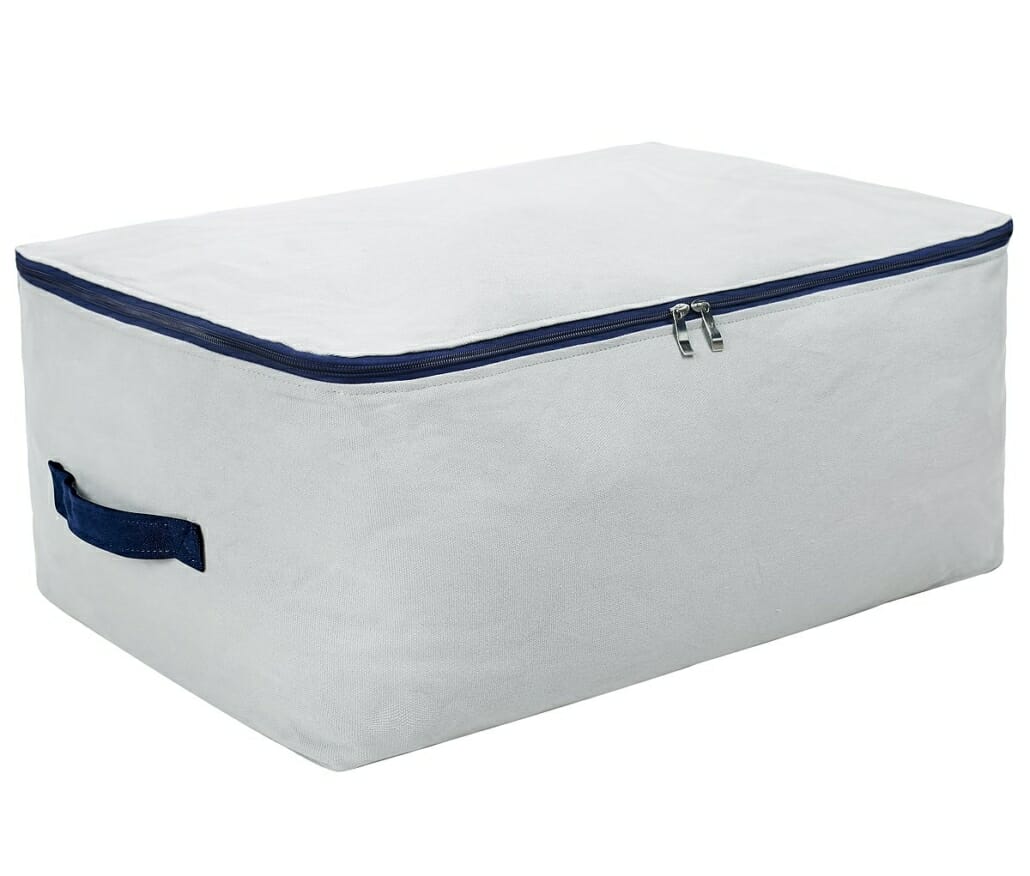
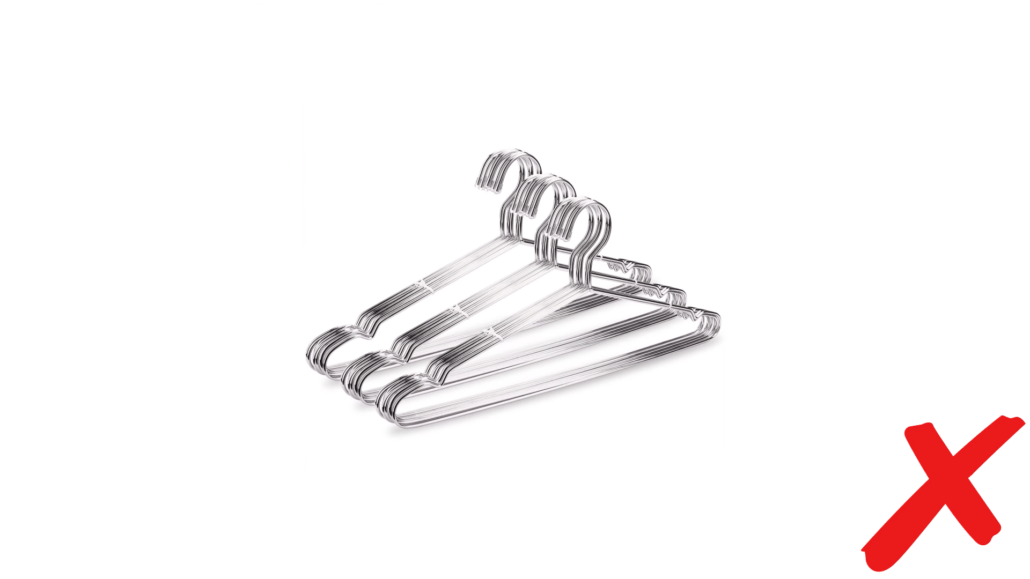
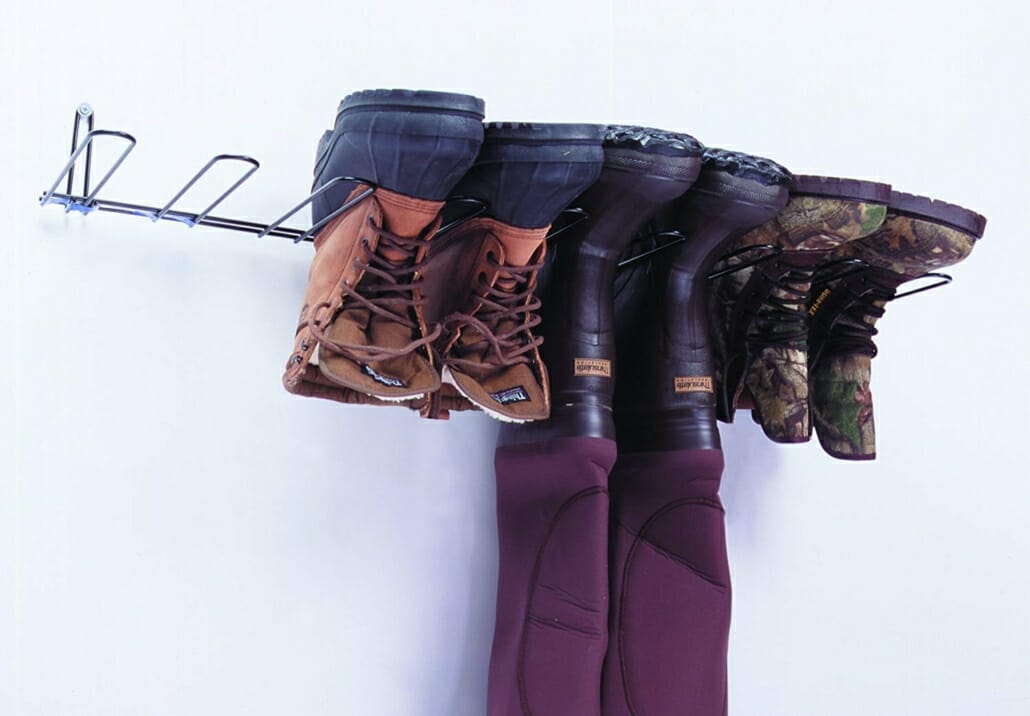
Tissue in shoes – I happen to have a pair of shoe trees for each pair of “dress” shoes. Should I not store them that way long term?
The business about not leaving cedar shoe trees in for months on end was a complete surprise to me, and a cause of some dismay, as I have some dress shoes that I rarely wear that I keep in their box with shoe trees in them. So I am shortening their life? Well, better to learn this now than never, I suppose, but this is unhappy news.
Also, it never occurred to me to see to it that the tissue paper that I use is acid-free. I have never noticed any yellowing in the paper that I have used, so I take that as a sign that it is acid-free.
I don’t think you have to worry about cedar trees “wicking” or absorbing too much oil from leather shoes. For one thing, most decent shoes are fully lined. For another, most knowledgeable makers and wearers recommend periodic application of a leather conditioner such as Saphir renovateur as part of the shoe maintenance cycle and this will ensure that the leather retains enough oils to remain supple. Finally, unless you are sanding your cedar shoe trees frequently, their surface will become less absorbent with time anyway, having absorbed from the shoes’ lining moisture and skin oils from perspiration, and having undergone natural oxidation of the natural cedar oils in the wood, and of the wood itself. I have several pairs of shoes more than ten years old that have been stored their entire lives with cedar trees, worn only at intervals, and they remain as supple as ever. Acid-free tissue is another matter, and is important for storing cottons, linens, and rayons especially, as acidity will cause weakening of the cellulose fibers by hydrolysis and the discoloration products of the acidic tissue can stain the cloth. Wool is by nature slightly acidic and less vulnerable, but it’s still not a good idea to store it, especially if light-colored, long-term in acidic materials. Same goes for silk, cashmere, and other protein-based fibers. So don’t wrap that new vicuña polo coat in newsprint . . . .
Thank you for another salient and detailed article Mr Schlueter.
I write from a corner of the globe which has been known by those of us who have lived here for more than a few years to have weather that displays four seasons of weather within a 24 hour period with alarming regularity in any given month. We have recently had mid-fall temperatures in the mid 90s dropping to the mid 30s overnight. In effect this means that it is necessary to have all clothing that one owns readily accessible each day regardless of the season. A positive spin on this could be that it is completely unnecessary to spend extra time storing any clothes and I can just clean as the need arises.